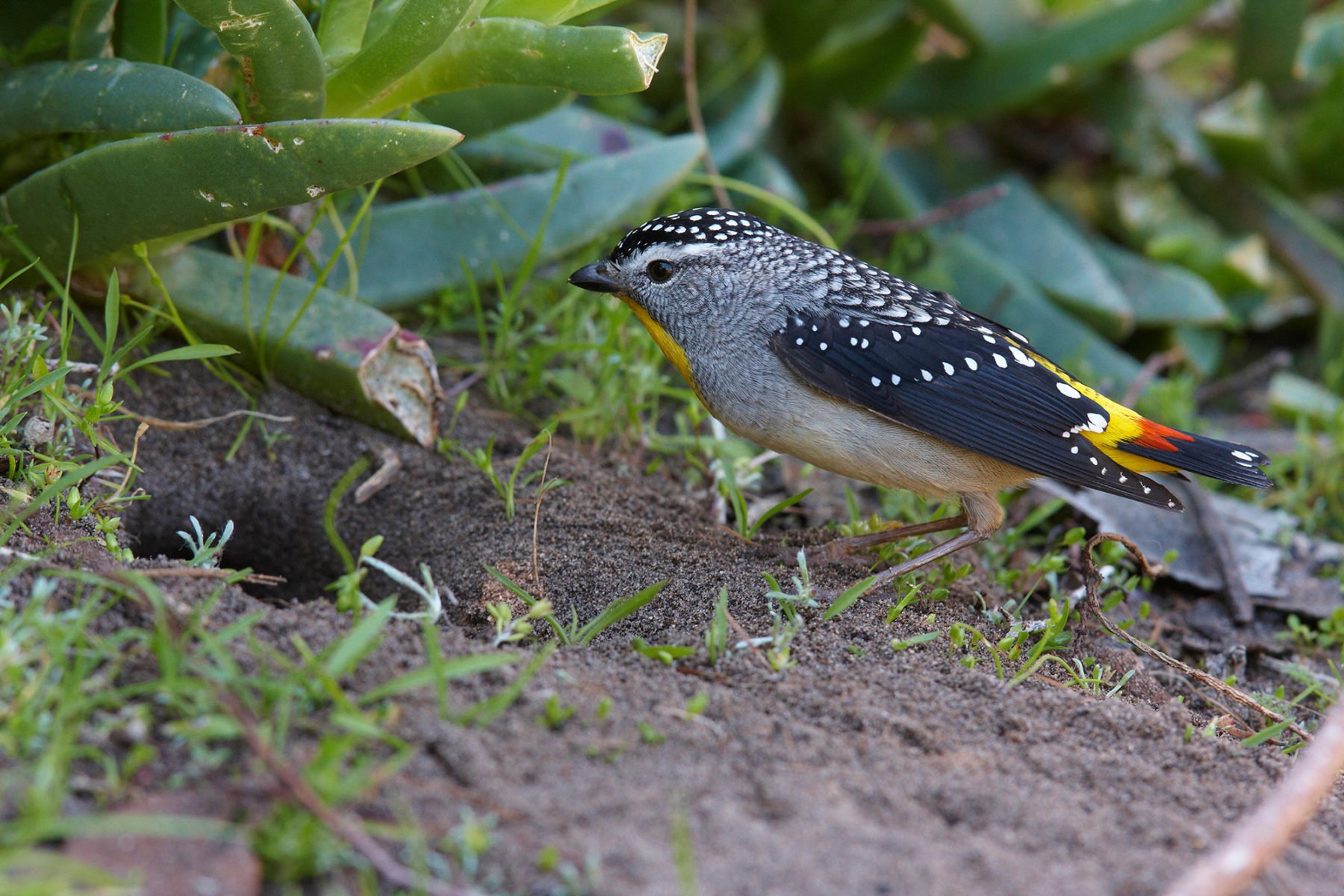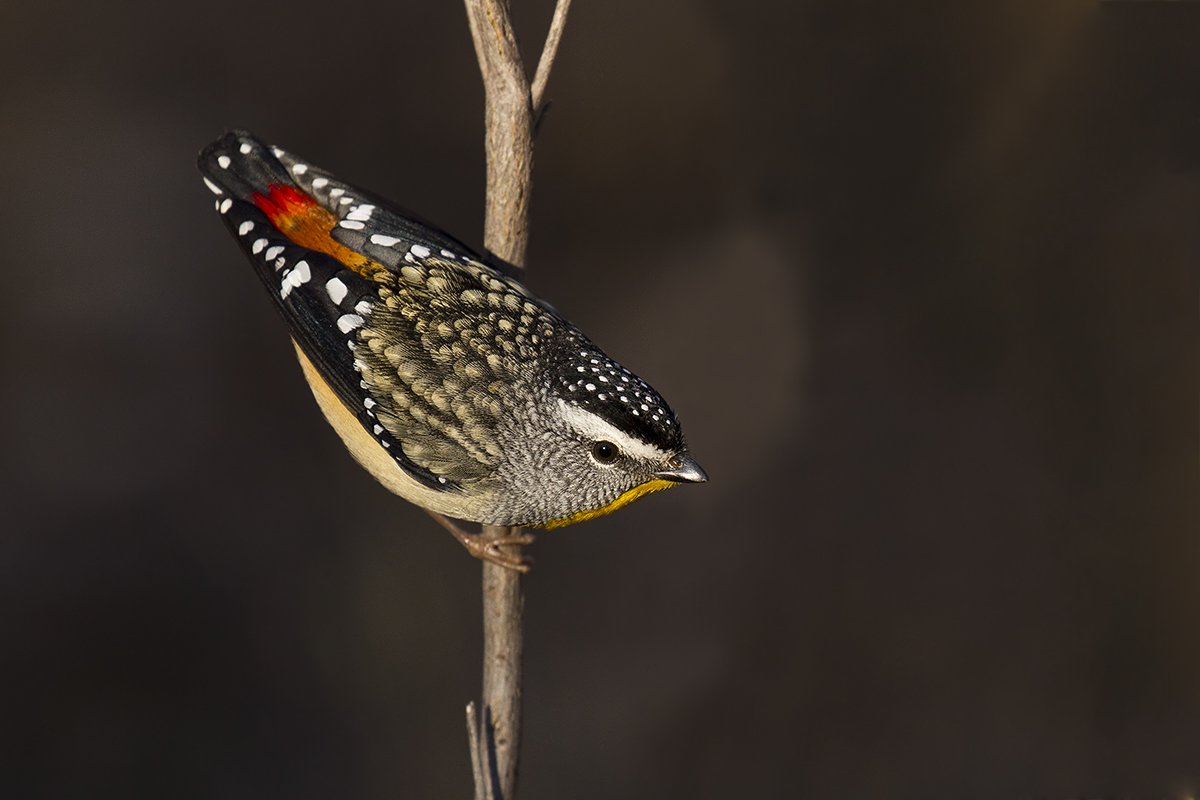The burrowing spotted pardalote is among Australia’s smallest

Bec Crew
Bec Crew

Found along the east coast, south-east and south-west corner of Australia, the spotted pardalote (Pardalotus punctatus) is one of few in the world that chooses to forego its ability to build its nest high up in the trees. Instead, it excavates an elaborate tunnel (or renovates an abandoned rabbit warren) that can run, horizontally, up to 1.5 metres underground. This leads to a nest chamber lined with shredded bark, down and other soft materials.
During the breeding season (between August or September to December or January), spotted pardalotes will lay one clutch of eggs, which both parents will tend to for about forty days, through incubation to hatching to preparing the nestlings for the outside world.
Birds that nest underground risk a lot for their subterranean life. Burrows can be easily accessed by snakes and other egg-eating reptiles and can cave in or collapse due to pressures on the surface.
And then there are the parasites. Blood-sucking fly larvae are attracted to pardalote nests because they can make a decent meal out of a new hatchling.
 Related: Scientists have invented a way to save a little Australian bird from a blood-sucking maggot
Related: Scientists have invented a way to save a little Australian bird from a blood-sucking maggot
In some areas, these parasites kill nine out of every ten chicks of forty-spotted pardalotes (Pardalotus quadragintus) – a close relative of the spotted pardalote and very rare Australian species – through their voracious feeding.
Scientists are figuring out how to help these birds, for example by offering them feathers treated with insecticide to line their nests with.
A 2020 paper led by Fernanda Alves from the Australian National University reports that pardalotes readily incorporated the insecticide-laced feathers in their nests, and survival of hatchlings was significantly higher in nests lined with treated feathers (95 per cent) compared to nests lined with control feathers (8 per cent).
Here’s a spotted pardalote at the entrance of its burrow:

Spotted pardalotes are easily identified by their distinctive spots and grey, red and yellow colouring. They’ve been nicknamed diamond birds, presumably because all of those spots make them look like they’re encrusted in precious stones.
You can see the red colouring better in this photo of a male (the males have much more vibrant colours than the females):

We’ll leave you with some fantastic footage of a spotted pardalote in the entrance of its burrow, which shows you how impressively large the tunnel is. It’s quite the achievement for such a tiny bird:

